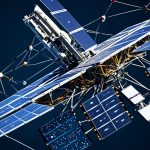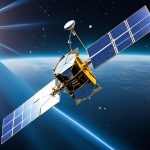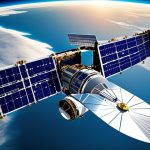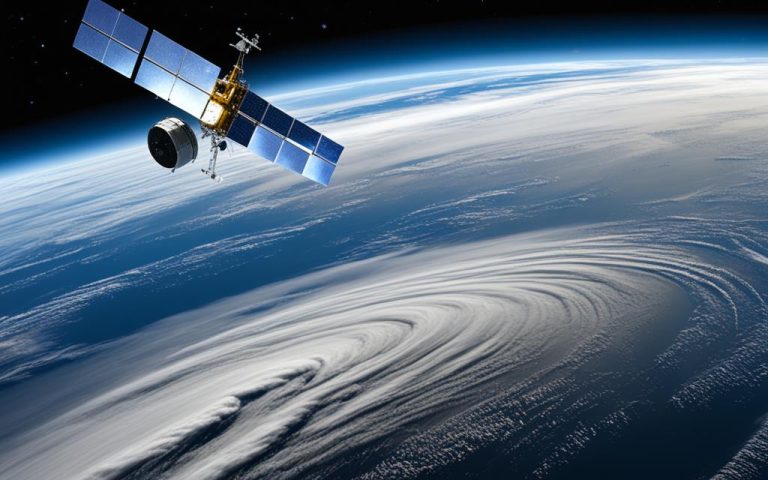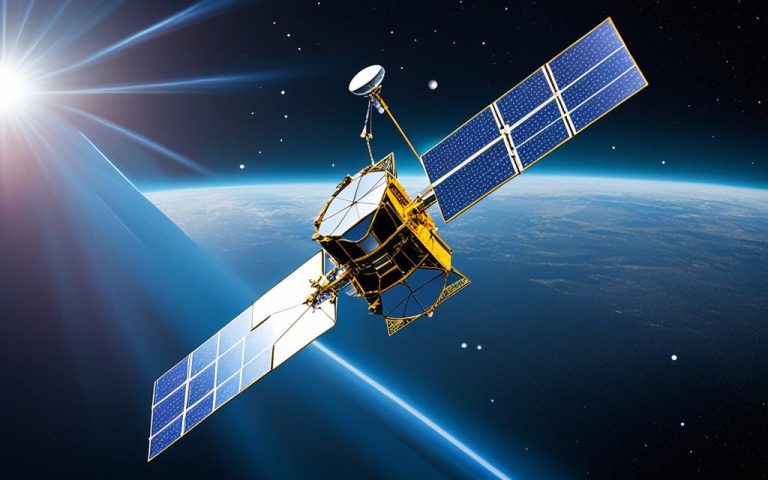Welcome to the world of satellite communication protocols. In this article, we will explore the fascinating realm of Satellite Communication Protocols, with a focus on Time Division Multiple Access (TDMA) and Frequency Division Multiple Access (FDMA). These protocols form the backbone of modern satellite communication systems, allowing for efficient data transmission and connectivity across vast distances.
When it comes to satellite communication, the efficient utilization of bandwidth is crucial. That’s where TDMA and FDMA come into play.
First, let’s delve into FDMA, which stands for Frequency Division Multiple Access. In FDMA, the available frequency bandwidth is divided into channels, with each station assigned a specific frequency band for data transmission. This ensures that each station operates on a separate frequency, reducing the chances of interference and improving overall efficiency.
On the other hand, TDMA, which stands for Time Division Multiple Access, focuses on dividing the available bandwidth into time slots. Each station is assigned a specific time slot for data transmission. Synchronization between stations is crucial for proper time slot usage, ensuring that data is transmitted in bursts during the assigned time slots.
While TDMA focuses on time division and FDMA on frequency division, there is also another significant protocol known as Code Division Multiple Access (CDMA). In CDMA, multiple stations can transmit data simultaneously using unique code sequences. This revolutionary approach allows for efficient simultaneous transmission without dividing the bandwidth into separate frequency bands or time slots.
Stay tuned as we explore FDMA, TDMA, and CDMA in further detail, shedding light on their intricacies, benefits, and applications in satellite communication systems. Together, let’s unlock the secrets of these communication protocols and discover the future of connectivity.
Frequency Division Multiple Access (FDMA)
In satellite communication, Frequency Division Multiple Access (FDMA) is a channelization protocol that plays a vital role in dividing the available frequency bandwidth into channels and assigning them to different stations. This enables efficient data transmission and ensures effective utilization of the available resources.
With FDMA, each station is allocated a specific frequency band for transmitting data. This division of frequency bands allows multiple stations to share the overall frequency spectrum, making it a highly efficient channelization protocol.
One important aspect of FDMA is the use of guard bands. These small bands of unused frequency serve as separators between the frequency bands assigned to different stations. Guard bands prevent interference between adjacent frequency bands and ensure the integrity of the transmitted data.
FDMA offers several advantages in satellite communication. Unlike some other channelization protocols, FDMA does not require synchronization between stations. Each station can transmit its data independently, allowing for continuous signal transfer.
As a result, FDMA provides a reliable and efficient method for dividing the frequency spectrum and enabling seamless data transmission in satellite communication systems.
To illustrate the allocation of frequency bands in an FDMA system, consider the following table:
| Station | Frequency Band |
|---|---|
| Station 1 | 500 MHz – 510 MHz |
| Station 2 | 510 MHz – 520 MHz |
| Station 3 | 520 MHz – 530 MHz |
This table demonstrates how different frequency bands are allocated to individual stations in an FDMA system. The guard bands between the frequency bands ensure interference-free transmission and maximize the utilization of the available frequency bandwidth.
FDMA continues to be a fundamental channelization protocol in satellite communication, offering efficient frequency division and data transmission capabilities.
Time Division Multiple Access (TDMA)
Time Division Multiple Access (TDMA) is a channelization protocol widely used in satellite communication. It is a method of dividing the available bandwidth into discrete time slots, where each station is allocated a specific time slot for data transmission. This technique ensures efficient usage of the shared bandwidth by allowing multiple stations to transmit data within a synchronized time frame.
Unlike other channelization protocols, such as Frequency Division Multiple Access (FDMA), TDMA does not divide the bandwidth into separate frequency bands. Instead, it focuses on dividing the time domain into slots, which eliminates the need for guard bands to prevent interference.
One of the key advantages of TDMA is its ability to support multiple users sharing the same frequency spectrum. It operates by transmitting data in bursts during the assigned time slots, with each station taking turns to transmit. This time-division approach allows for greater flexibility in the allocation of bandwidth.
Synchronization is crucial in TDMA to ensure proper time slot usage and prevent collisions between transmissions. By synchronizing the stations, each one knows precisely when it can transmit its data, avoiding overlapping time slots and ensuring efficient utilization of the available bandwidth.
TDMA is commonly used in wireless networks, including satellite communication systems. It provides moderate flexibility in data transfer and allows for efficient sharing of the total bandwidth among different users. This makes TDMA an effective channelization protocol for applications where multiple stations need to share limited communication resources.
Overall, Time Division Multiple Access (TDMA) is a channelization protocol that divides the available bandwidth into time slots, enabling efficient data transmission among multiple stations. With synchronization and proper slot allocation, TDMA offers moderate flexibility in data transfer and is widely used in wireless networks, including satellite communication systems.
Code Division Multiple Access (CDMA)
Code Division Multiple Access (CDMA) is a channelization protocol in satellite communication that enables multiple stations to transmit data simultaneously, offering high flexibility in data transfer. Unlike Frequency Division Multiple Access (FDMA) and Time Division Multiple Access (TDMA), CDMA does not divide the bandwidth into separate frequency bands or time slots. Instead, each station is assigned a unique code sequence, which allows for the separation of multiple simultaneous transmissions over the entire frequency spectrum.
This unique code sequence used in CDMA is what sets it apart from other protocols. It ensures that each station’s signal is distinguishable and can be decoded correctly at the receiving end. By employing distinct code sequences, CDMA enables simultaneous transmission without interference between different stations.
CDMA has been widely adopted in digital signal transmission and is commonly used in various communication systems, including satellite communication. It offers several advantages, such as increased capacity and improved spectrum efficiency. Furthermore, CDMA allows for efficient utilization of the available bandwidth, making it an excellent choice for networks with high user density.
The Benefits of CDMA
- Simultaneous Transmission: CDMA enables multiple stations to send and receive data simultaneously, optimizing network capacity.
- Unique Code Sequence: Each station is assigned a distinctive code sequence, ensuring the separation and proper decoding of simultaneous transmissions.
- Flexibility: CDMA provides high flexibility in data transfer, making it suitable for various communication applications.
- Spectrum Efficiency: By efficiently utilizing the available bandwidth, CDMA maximizes the use of the frequency spectrum.
Comparison of CDMA with FDMA and TDMA
| CDMA | FDMA | TDMA | |
|---|---|---|---|
| Bandwidth Division | No separate frequency bands | Frequency bands are divided | Time slots are allocated |
| Simultaneous Transmission | Yes | No | No |
| Code Sequence | Unique code sequence for each station | Not applicable | Not applicable |
| Flexibility | High | Medium | Medium |
CDMA’s ability to facilitate simultaneous transmission without bandwidth or time slot division makes it a powerful channelization protocol for satellite communication. Its unique code sequence methodology ensures efficient data separation and decoding, resulting in enhanced network capacity and flexibility.

By harnessing the strengths of CDMA, satellite communication systems can achieve optimal performance, catering to the ever-increasing demand for efficient and reliable data transfer.
Other Multiple Access Techniques
In addition to FDMA, TDMA, and CDMA, there are other multiple access techniques used in satellite communication. These techniques provide additional options for efficient data transmission in satellite communication. Let’s explore two of these techniques: Polarization Division Multiple Access (PDMA) and Carrier Sense Multiple Access with Collision Detection (CSMA-CD) and Carrier Sense Multiple Access with Collision Avoidance (CSMA-CA).
Polarization Division Multiple Access (PDMA)
PDMA is a technique that separates signals using different polarizations of antennas, allowing multiple signals to coexist on the same frequency. By allocating orthogonal polarizations to different users, PDMA ensures minimal interference, maximizing the utilization of the frequency spectrum.
Carrier Sense Multiple Access with Collision Detection (CSMA-CD)
CSMA-CD is a classical access method commonly used in Ethernet LANs. In CSMA-CD, stations listen to the network before transmitting data. If they detect any signal, indicating ongoing transmission, they wait for a random delay before attempting to retransmit their data. This collision detection method helps to minimize data collisions and ensures fair access to the shared medium.
Carrier Sense Multiple Access with Collision Avoidance (CSMA-CA)
Similar to CSMA-CD, CSMA-CA is an access method used in wireless networks. In CSMA-CA, stations listen to the channel to determine if it is idle before transmitting data. If the channel is busy, the station waits for a random backoff time before attempting to transmit. This collision avoidance technique helps reduce collisions in wireless networks and improves overall efficiency.
| Technique | Description |
|---|---|
| Polarization Division Multiple Access (PDMA) | Separates signals using different polarizations of antennas, enabling multiple signals on the same frequency. |
| Carrier Sense Multiple Access with Collision Detection (CSMA-CD) | Stations listen to the network before transmitting data, retransmitting data after a random delay to avoid collisions. |
| Carrier Sense Multiple Access with Collision Avoidance (CSMA-CA) | Stations listen to the channel and wait for a random backoff time before attempting to transmit data, reducing collisions in wireless networks. |
Conclusion
The future of communication access technologies is shaped by specific application and network requirements. However, it is widely acknowledged that FDMA, TDMA, CDMA, OFDMA, and SDMA will continue to play crucial roles in communication systems. These protocols offer higher bandwidth and capacity, catering to the ever-growing needs of businesses and consumers.
FDMA’s focus on bandwidth division, TDMA’s emphasis on time division, and CDMA’s unique code sequences enable efficient data transmission. Moreover, the advent of OFDMA and SDMA opens up new possibilities for communication networks, providing even higher levels of performance and flexibility.
As we look to the future, the trend towards wireless and mobile communication will persist, driven by the demand for increased flexibility and data throughput. These advanced technologies will pave the way for the next generation of communication systems, empowering individuals and organizations to connect and communicate seamlessly.
FAQ
What is FDMA?
FDMA is a channelization protocol in satellite communication where the available frequency bandwidth is divided into channels and assigned to different stations. Each station is allocated a specific frequency band for data transmission. Guard bands, which are small bands of unused frequency, separate the frequency bands of different stations to prevent interference. FDMA does not require synchronization between stations and allows continuous signal transfer.
What is TDMA?
TDMA is a channelization protocol in satellite communication where the available bandwidth is divided into time slots. Each station is assigned a specific time slot for data transmission. Synchronization is required between different stations to ensure proper time slot usage. TDMA operates by transmitting data in bursts during the assigned time slots, with the total bandwidth shared among different users. TDMA is commonly used in wireless networks and offers moderate flexibility in data transfer.
What is CDMA?
CDMA is a channelization protocol in satellite communication that allows multiple stations to transmit data simultaneously. Unlike FDMA and TDMA, CDMA does not divide the bandwidth into separate frequency bands or time slots. Instead, each station is assigned a unique code sequence, which allows for the separation of multiple simultaneous transmissions over the entire frequency spectrum. CDMA offers high flexibility in data transfer and is commonly used in digital signal transmission.
Are there any other multiple access techniques used in satellite communication?
Yes, apart from FDMA, TDMA, and CDMA, there are other multiple access techniques used in satellite communication. These include Polarization Division Multiple Access (PDMA), which separates signals using different polarizations of antennas, allowing multiple signals on the same frequency. Another technique is Carrier Sense Multiple Access with Collision Detection (CSMA-CD), a classical access method used in Ethernet LANs, where collisions are detected and retransmissions occur after a random delay. Carrier Sense Multiple Access with Collision Avoidance (CSMA-CA) is a similar method used in wireless networks. These techniques provide additional options for efficient data transmission in satellite communication.
What is the future of communication access technologies?
The future of communication access technologies will depend on specific application and network requirements. However, it is generally agreed that FDMA, TDMA, CDMA, Orthogonal Frequency Division Multiple Access (OFDMA), and Space Division Multiple Access (SDMA) will continue to play important roles in communication systems. These protocols provide higher bandwidth and capacity to meet the needs of businesses and consumers. The trend towards wireless and mobile communication will also continue, as these technologies offer flexibility and increased throughput for future generations.


